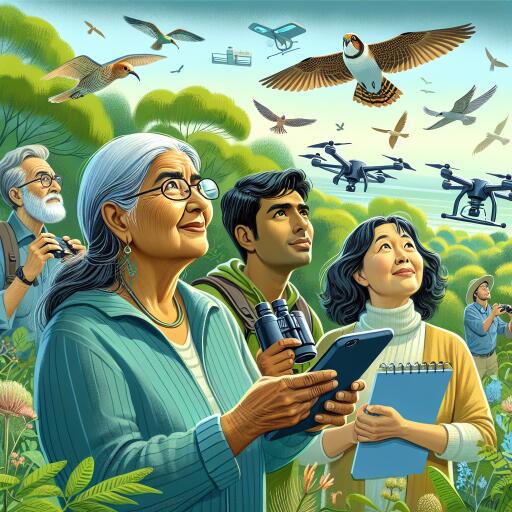
Researchers Combine Citizens’ Help and Cutting-Edge Tech to Track Biodiversity
Innovative technologies, alongside contributions from citizen scientists, are revolutionizing the way we monitor and conserve Europe’s increasingly threatened ecosystems and species.
It was back in 1998 when a seemingly insignificant event occurred in a park in Zurich, Switzerland—a foreign bug made its debut. Transported unwittingly with Chinese garden bricks, a brown marmorated stink bug found itself in a new environment.
Fast forward to 2024 and this species, known scientifically as Halyomorpha halys, has established itself as an invasive threat, wreaking havoc on European fruit and vegetable agriculture.
Thanks to a collaborative effort between researchers and citizen scientists across Europe, the presence of the stink bug is now well-tracked across regions including Italy, France, and Spain. Citizen scientists—volunteers from the public sphere—play a pivotal role in this data gathering process.
With the help of a few clicks, scientists at the Naturalis Biodiversity Center in the Netherlands can effortlessly observe the bug’s spread, leveraging a Europe-wide network of citizen scientists. This initiative is an integral part of a larger four-year EU-led endeavor named MAMBO, dedicated to enhancing biodiversity monitoring with state-of-the-art technology utilizing sound, vision, and artificial intelligence.
An alarming report from December 2024 by the European Environment Agency highlighted the rapid decline in Europe’s biodiversity, citing factors like aggressive agricultural practices, urbanization, hunting, invasive species, and pollution as primary culprits.
The ongoing MAMBO project, running from 2022 to 2026, places significant emphasis on utilizing tools such as drones, cameras, and sensors to amass comprehensive data on various species populations, while researchers at centers like Naturalis focus on integrating online citizen contributions.
One innovative approach is utilizing platforms like Observation.org, where public-submitted images of flora and fauna are aiding in species identification and tracking efforts. Researchers are developing AI-based models to streamline the identification process using these submissions. Their 2023 model, rolled out during the project’s initial phase, supports these endeavors by rapidly processing the growing influx of imagery.
Enhancing Monitoring of Species and Habitats
The MAMBO project is spearheaded by initiatives aiming to elevate the species monitoring process, especially for invertebrates such as bees and beetles, alongside an analysis of habitat conservation levels throughout Europe. Currently, the EU identifies 1,840 protected species and 230 protected habitats, yet a mere 15% boast a good conservation status, leaving the majority in poor or deteriorating condition.
To tackle this, the MAMBO team is fostering the deployment of novel monitoring technologies, which include AI-powered sound recognition, high-resolution mapping, and specific habitat condition metrics. Moreover, they are setting up a virtual lab designed to efficiently handle massive data streams, enhancing ecological monitoring at both regional and global scales. These advancements aim to inform strategy and implementation for the EU’s Biodiversity Strategy for 2030, an essential component of the European Green Deal focused on preserving nature and combatting ecosystem degradation.
In 2024, MAMBO teams established systems at demonstration sites across Europe. In the Netherlands, camera traps help quantify insect populations, while in France, drones and satellite imagery are utilized to create 3D maps of natural reserves, tracking ecological changes annually.
These efforts could revolutionize the monitoring of Europe’s ecological landscape, providing invaluable insights for policy directives associated with the EU Biodiversity Strategy.
Addressing the Environmental Impact of New Technology
While the infrastructure developed by MAMBO relies heavily on technological advances, it’s crucial to consider the environmental implications of these innovations. AI technology, although vital for biodiversity conservation, demands substantial energy and resources, creating a notable environmental footprint.
Throughout the course of MAMBO, researchers will assess the environmental costs associated with their tools, analyzing both the hardware requirements and the wider ecological impact of AI models in use. Despite these challenges, the integration of technology and citizen engagement is generating optimistic avenues for bridging humans to nature, while accumulating crucial biodiversity data.
Ultimately, the involvement of citizen scientists is more than just a data collection initiative; it symbolizes an increased public engagement with the environment, promising a positive future where people play a direct role in conserving our planet’s rich biodiversity.





Leave a Reply